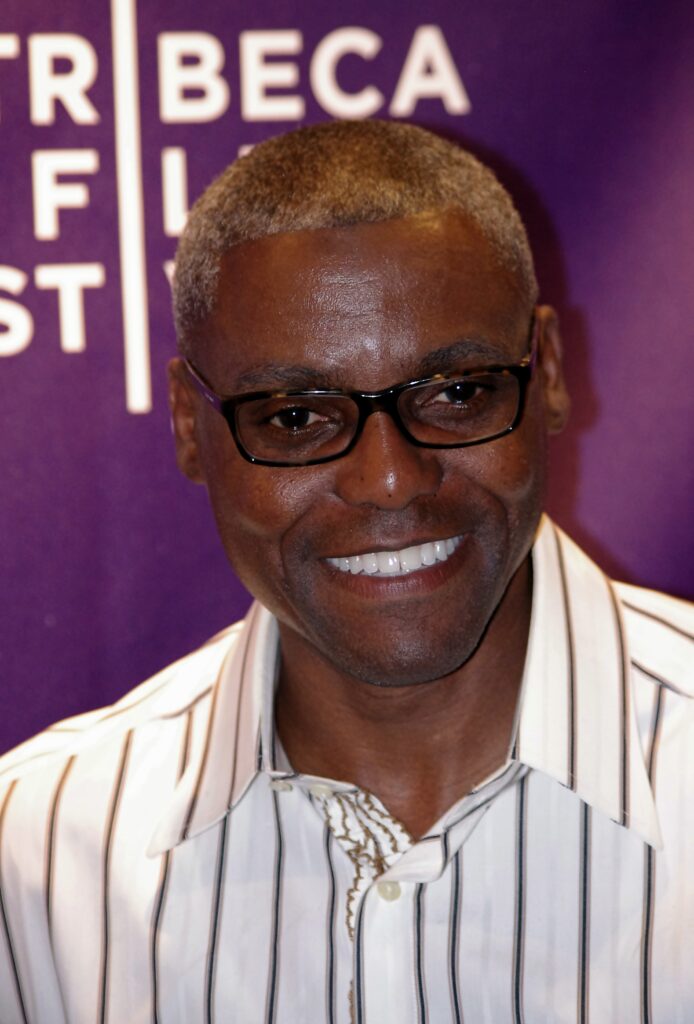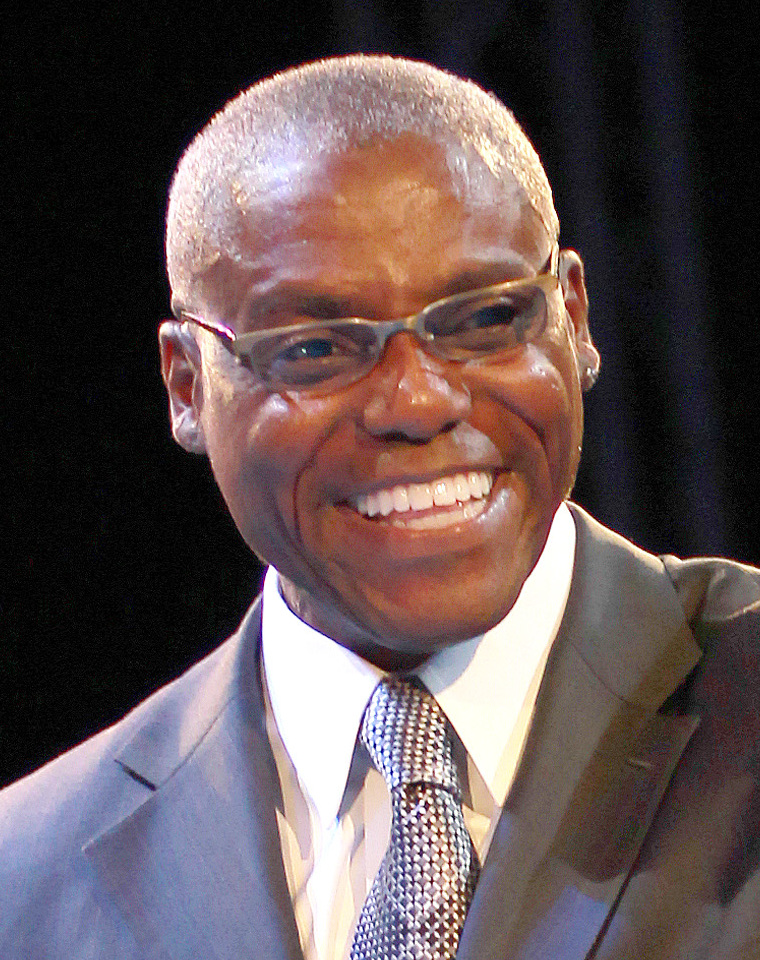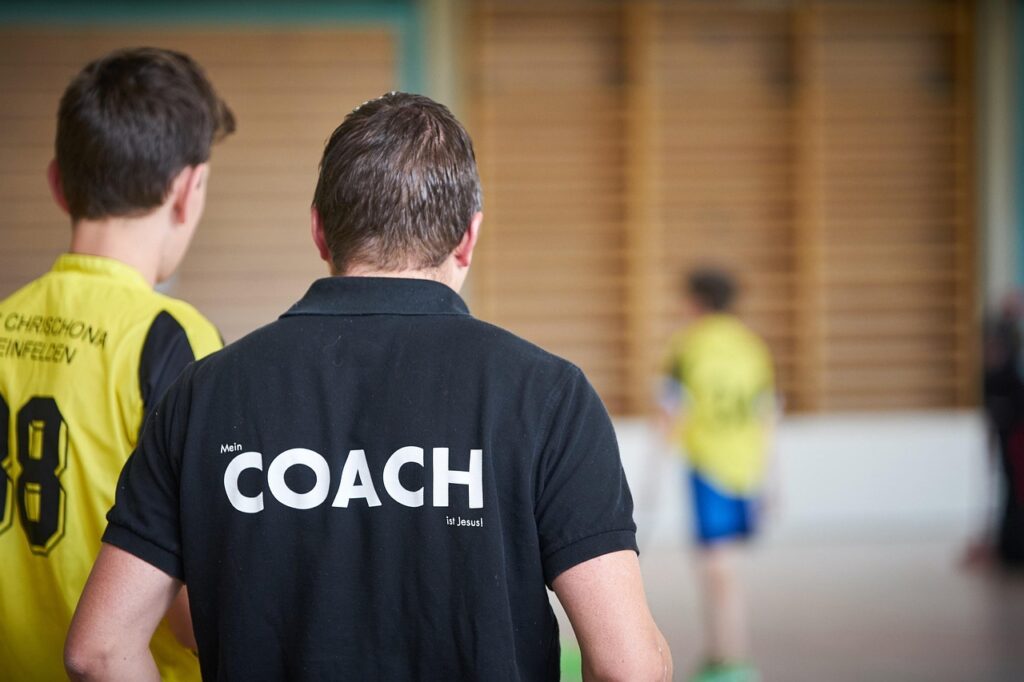
In the world of sports, the term “former” often precedes the name of an athlete who has transcended their competitive years, moving beyond the arena where they once captivated millions. Yet, for true legends, “former” doesn’t signify an end, but rather a profound evolution. It speaks to a past state, position, or identity that has laid the groundwork for new, often unexpected, chapters in their journey.
Such is the case with Carl Lewis, an athlete whose name is synonymous with Olympic greatness and unparalleled dominance in track and field. His career, spanning nearly two decades, left an indelible mark on athletic history. But what happens when a nine-time Olympic gold medalist hangs up their spikes? For Lewis, it meant a deliberate shift into a role that, while deeply connected to his roots, offers a fresh perspective on his enduring influence.
This article delves into the remarkable ascent of Carl Lewis, examining the pivotal moments and defining achievements that forged his iconic status. We will trace his journey from a prodigious talent to a global phenomenon, exploring how the very essence of his “former” athletic self continues to inform and enrich his current, vital contributions to the sport he loves.

1. **Early Life and Athletic Foundations**
Frederick Carlton Lewis, born on July 1, 1961, in Birmingham, Alabama, was destined for a life immersed in athletics. His parents, William and Evelyn Lewis, played a crucial role, running a local athletics club that served as a fertile ground for both him and his sister, Carol, to develop their talents. His mother, Evelyn, was herself a hurdler on the 1951 Pan-Am team, instilling a deep appreciation for competitive sports within the family.
His elder brother, Cleveland Lewis, even ventured into professional soccer, playing for the Memphis Rogues. This vibrant athletic environment provided Carl with early exposure and inspiration. Under the initial guidance of his father, who coached other local athletes to elite status, Lewis began competing in the long jump at the tender age of 13.
It was during his time at Willingboro High School in New Jersey, under the coaching of Andy Dudek and Paul Minore, that Lewis truly emerged as a promising athlete. He quickly distinguished himself, achieving the impressive ranking of fourth on the all-time World Junior list of long jumpers. These formative years, deeply rooted in family support and dedicated coaching, laid the essential groundwork for the legendary career that was about to unfold.
Read more about: Beyond the Theme Song: Unpacking the Universal Journey Through the Ages and Stages of Your Childhood

2. **Forging a Champion: University of Houston and Coach Tom Tellez**
As his high school career drew to a close, Carl Lewis became a highly sought-after recruit by numerous colleges. His choice to enroll at the University of Houston proved to be a pivotal decision, largely due to the presence of coach Tom Tellez. Tellez would become an indispensable figure in Lewis’s life, remaining his coach for the entirety of his illustrious career, a testament to their profound partnership and mutual dedication.
Just days after graduating from high school in 1979, Lewis shattered the high school long jump record with an impressive leap of 8.13 meters (26 ft 8 in). This early achievement signaled his extraordinary potential on the national stage. By the end of that same year, Track and Field News had already recognized his burgeoning talent, ranking him fifth in the world for the long jump.
An old knee injury, however, had resurfaced towards the end of his high school year, raising concerns about his fitness. Working closely with Tellez, Lewis meticulously adapted his technique, enabling him to jump without pain and regain his competitive edge. This collaborative effort culminated in him winning the 1980 National Collegiate Athletic Association (NCAA) title with a wind-assisted jump of 8.35 meters (27 ft 4+1⁄2 in), a clear indication of his resilience and burgeoning skill.
3. **The Shadow of a Boycott: 1980 Olympic Aspirations**
By 1980, Carl Lewis was not only excelling in the long jump but also beginning to demonstrate significant talent in the sprints, drawing comparisons to the legendary Jesse Owens. His rapid development saw him qualify for the American team for the 1980 Olympics, earning spots in both the long jump and as a member of the 4 × 100-meter relay team. The realization of an Olympic dream seemed within reach for the young athlete.
However, fate intervened in the form of the Olympic boycott, which unfortunately precluded Lewis from competing in Moscow, Russia. Despite this setback, he still had the opportunity to showcase his abilities at the Liberty Bell Classic in July 1980, an alternate meet organized for boycotting nations. There, he secured a bronze medal in the long jump with a leap of 7.77 meters (25 ft 5+3⁄4 in), and the American 4 × 100-meter relay team proudly won gold with a time of 38.61 seconds.
In recognition of his achievement and the unfortunate circumstances, Lewis was among the 461 athletes on the 1980 U.S. Summer Olympics team to receive a Congressional Gold Medal, a small but significant acknowledgment of his Olympic-level aspirations. Despite not competing on the ultimate global stage, he ended the year ranked sixth in the world in the long jump and seventh in the 100 meters, signaling his undeniable presence among the elite.
4. **The Breakthrough Era: Dominance in 1981 and 1982**
1981 marked a significant turning point in Carl Lewis’s career, as he began to truly assert his dominance on the track and in the field. His personal best in the legal long jump, which had stood as his high school record from 1979, saw a dramatic improvement. On June 20, while still a teenager, he leaped an astounding 8.62 meters (28 ft 3+1⁄4 in) at the TAC Championships, almost half a meter further than his previous best.
Lewis also demonstrated an unwavering determination to set his records at sea level, famously stating, “I want the record and I plan to get it, but not at altitude. I don’t want that ‘(A)’ [for altitude] after the mark.” This resolve was particularly notable given that many existing world records in sprints and long jump had been set at the high altitude of Mexico City, where thinner air provided an advantage. This commitment underscored his pursuit of pure, undeniable excellence.
Simultaneously, Lewis established himself as the fastest 100-meter sprinter in the world. His best time, a modest 10.67 seconds in 1979, had improved to a world-class 10.21 seconds the following year. But in 1981, he ran 10.00 seconds at the Southwest Conference Championships, a time that ranked as the third-fastest in history and stood as the low-altitude record. For the first time, Lewis achieved the prestigious number one ranking in the world for both the 100 meters and the long jump, cementing his status by winning his first national titles in these events and earning the James E. Sullivan Award as the top amateur athlete in the United States.
His dominance continued unabated into 1982. It was during this year that Lewis began to seriously challenge Bob Beamon’s legendary world record of 8.90 meters (29 ft 2+1⁄4 in) in the long jump, a mark widely regarded as one of the greatest athletic achievements ever. Lewis cleared 28 feet (8.53 meters) five times outdoors and twice more indoors, reaching an astounding 8.76 meters (28 ft 8+3⁄4 in) in Indianapolis on July 24. This performance was part of a remarkable weekend where he also recorded three fouls, two of which observers believed exceeded Beamon’s record, and a third that some claimed reached an incredible 30 feet (9.14 meters). Lewis firmly believed he should have been credited with that jump, citing a misinterpretation of rules by track officials.
He once again repeated his number one ranking in both the 100 meters and long jump, while also securing a number six ranking in the 200 meters. For his consistent excellence, he was named Athlete of the Year by Track and Field News. His unparalleled consistency was evident from 1981 to 1992, during which he topped the 100-meter ranking six times and never fell below third. His reign in the long jump was even more profound, topping the rankings nine times in the same period and never ranking lower than second, a testament to his sustained and exceptional talent.
Read more about: A Royal Musical Journey: Prince’s Enduring Partnership with Innovation, Artistry, and His Global Audience
5. **Inaugural World Stage: Helsinki 1983 and Records**
The year 1983 marked a historic moment in track and field with the organization of the first World Championships by the International Association of Athletics Federations (IAAF). For Carl Lewis, it presented another opportunity to cement his burgeoning legacy. Although his primary rival in the long jump, Larry Myricks, who had beaten Lewis previously and surpassed 28 feet, failed to qualify, Lewis still approached the event with his characteristic focus.
At Helsinki, Lewis secured victory in the long jump with relative ease, his winning leap of 8.55 meters (28 ft 1⁄2 in) decisively defeating silver medalist Jason Grimes by 0.26 meters (10 inches). His dominance extended to the 100 meters, where he also claimed gold. Even against Calvin Smith, who had earlier set a new world record at altitude with a 9.93-second performance, Lewis triumphed convincingly, running 10.07 seconds to Smith’s 10.21 seconds.
While Smith claimed the 200-meter title, an event Lewis had not entered, Lewis had already made his mark in that distance earlier in the year. He set an American record in the 200 meters on June 19 at the TAC/Mobil Championships, clocking an astonishing 19.75 seconds. This was the second-fastest time in history and established a new low-altitude record, just 0.03 seconds shy of Pietro Mennea’s 1979 world record. Observers noted that Lewis likely could have broken the world record had he not eased off in the final meters to celebrate, highlighting his exceptional speed and control.
Lewis capped off his World Championships performance by running the anchor leg of the 4 × 100-meter relay, leading the team to a new world record of 37.86 seconds – the first world record of his career. Beyond the championships, Lewis continued to push boundaries. He became the first person to run a sub-10-second 100 meters at low-altitude, achieving 9.97 seconds in Modesto on May 14. He also set a new low-altitude record in the long jump at 8.79 meters (28 ft 10 in) at the TAC Championships. These extraordinary performances earned him the number one ranking in both the 100 meters and long jump, and despite finishing second in the 200 meters behind Smith, he was once again named Athlete of the Year by Track & Field News, underscoring a truly spectacular season.

6. **L.A. 1984: Emulating Owens and Sparking Debate**
The 1984 Olympic Games in Los Angeles presented Carl Lewis with a monumental challenge: to emulate the legendary Jesse Owens, who had won four gold medals in the same events at the 1936 Berlin Games. Lewis entered four events, each with a realistic prospect of victory, and embarked on his quest with determination that captivated the world.
His journey began with a commanding win in the 100 meters, where he clocked 9.99 seconds, leaving his closest competitor, fellow American Sam Graddy, 0.2 seconds behind. Following this, Lewis entered the long jump, an event he won with apparent ease. However, his approach to this victory ignited a significant controversy, despite knowledgeable observers understanding the tactical rationale behind his actions.
With subsequent heats and finals in the 200 meters and the 4 × 100-meter relay still ahead, Lewis made a strategic decision to take only the necessary jumps to secure the win, mitigating the risk of injury in the cool conditions that could jeopardize his overarching goal of four gold medals. His initial leap of 8.54 meters (28 ft 0 in) was sufficient to clinch the gold. After fouling on his second jump, he chose to pass on his remaining four allotted attempts, a decision that led to loud boos from a public eager to witness a challenge to Bob Beamon’s legendary long jump record of 8.90 meters. Lewis himself had often stated this was a goal, and a television advertisement featuring Beamon had further heightened expectations. When questioned about the boos, Lewis remarked, “I was shocked at first. But after I thought about it, I realized that they were booing because they wanted to see more of Carl Lewis. I guess that’s flattering.”
His third gold medal came in the 200 meters, where he set a new Olympic record with a time of 19.80 seconds, marking the third-fastest time in history. Lewis then completed his historic sweep by anchoring the final leg of the 4 × 100-meter relay, breaking the tape in 37.83 seconds, which set a new world record. This achievement undeniably placed him in the pantheon of Olympic legends, matching Owens’s iconic feat.
7. **Navigating Public Scrutiny: Endorsements and Image Challenges**
Despite achieving the extraordinary feat of matching Jesse Owens’s four Olympic gold medals in the same events, Carl Lewis did not receive the lucrative endorsement offers he had anticipated. Several factors contributed to this unexpected backlash, with the long jump controversy at the Los Angeles Games being a significant one. His decision to limit his jumps, perceived by many as an unwillingness to push for a world record, led to public disapproval.
Furthermore, Lewis’s perceived self-congratulatory conduct did not resonate well with other track stars or the general public. His agent, Joe Douglas, compounded the issue by comparing Lewis to pop star Michael Jackson, a comparison that failed to land positively with the audience. Although Douglas later claimed he was misquoted, the impression of Lewis as aloof and egotistical became firmly entrenched in the public’s perception by the close of the 1984 Olympic Games.
Adding to his marketing challenges were persistent rumors about Lewis’s uality. Though he denied them, these rumors likely damaged his marketability in an era less accepting of such speculation. His distinctive physical appearance at the Games, including a flattop haircut and what was described as flamboyant clothing, further fueled these reports. High jumper Dwight Stones frankly stated, “It doesn’t matter what Carl Lewis’ sexuality is. Madison Avenue perceives him as homosexual.”
Prior to the Olympics, Coca-Cola had extended a lucrative deal to Lewis, but both he and Douglas declined, confident that his value would skyrocket after the Games. However, Coca-Cola rescinded their offer following the Olympics, reflecting Lewis’s changed public image. Nike, which had Lewis under contract for several years, also dropped him, with a representative stating, “If you’re a male athlete, I think the American public wants you to look macho.” Lewis lamented, “Everyone there was so scared and so cynical they did not know what to do.” He eventually signed an endorsement deal with Mizuno, attributing the negative perception to “Carl bashing” and inaccurate reporting, particularly from a Sports Illustrated article preceding the Olympics. Despite these challenges, Lewis ended the year with top rankings in the 100 meters, long jump, and 200 meters, earning him his third consecutive Athlete of the Year title from Track & Field News, a testament to his undeniable athletic prowess amidst personal and public scrutiny.
Read more about: Star Power Under Scrutiny: Shohei Ohtani and Agent Face Lawsuit Over Alleged Real Estate Sabotage in Hawaii

8. **Ben Johnson and the 1987 World Championships**
Following his 1984 Olympic successes, Carl Lewis maintained a remarkable seven-year undefeated streak in the long jump. However, his supremacy in the 100-meter sprint faced significant challenges, primarily from Canadian sprinter Ben Johnson. This rivalry intensified, culminating in 1986 when Johnson decisively defeated Lewis at the Goodwill Games in Moscow, setting a new low-altitude record of 9.95 seconds and claiming the world’s top ranking, pushing Lewis to third.
The rivalry peaked dramatically at the 1987 World Championships in Athletics in Rome. Lewis strategically focused on the long jump, winning with 8.67 meters (28 ft 5+1⁄4 in) against Robert Emmiyan. He also anchored the 4 × 100-meter relay to a record-tying time. However, the 100-meter final saw Johnson deliver a stunning new world record of 9.83 seconds. Lewis, despite equaling the *previous* world record with 9.93 seconds, finished second, a profound defeat that reshaped their rivalry.
In the aftermath, Lewis controversially questioned Johnson’s performance, hinting at the use of performance-enhancing drugs without explicit accusation. He stated, “There are a lot of people coming out of nowhere. I don’t think they are doing it without drugs.” Lewis even suggested he “could run 9.8 or faster in the 100 if I could jump into drugs right away.” This marked the beginning of Lewis’s public anti-doping advocacy, though critics noted his outspokenness coincided with his defeat, escalating the personal and athletic animosity.
Read more about: Remembering the Icons: A Look Back at the Lives We Lost in September 2025
9. **The Seoul 1988 Olympics: Redemption and Disqualification**
The 100-meter final at the 1988 Seoul Olympics was intensely anticipated, fueled by Lewis’s rivalry with Ben Johnson and a personal tragedy—the recent death of his father. Lewis had buried his 1984 100-meter gold with his father, promising his mother, “I’ll get another one,” transforming grief into powerful motivation. His wind-aided 9.78-second run at the U.S. Olympic trials further underscored his readiness to reclaim the top spot.
The Olympic final initially saw Johnson triumph again, breaking his own world record with an astonishing 9.79 seconds, as Lewis finished second. Yet, this victory was short-lived. Days later, Johnson tested positive for performance-enhancing drugs, leading to his disqualification, the stripping of his gold medal, and the annulment of his world record. This dramatic event sent shockwaves through the sporting world, retroactively validating Lewis’s earlier doping allegations.
Consequently, Carl Lewis was awarded the 100-meter gold medal, officially fulfilling his promise to his late father. Beyond the controversy, Lewis demonstrated his enduring prowess at the Seoul Games, securing a gold medal in the long jump, affirming his decade-long dominance. He also added a silver medal in the 200 meters. These achievements solidified his status as a multi-event champion under extraordinary and unprecedented circumstances.

10. **Sustained Dominance and Unbroken Records**
Carl Lewis’s career was defined by unparalleled sustained excellence, most notably in the long jump. He achieved an incredible 65 consecutive victories over a decade, from 1981 to 1991. This streak, one of the longest undefeated runs in track and field history, included 71 jumps exceeding 8.53 meters (28 feet). His consistency showcased remarkable athletic longevity and technical mastery.
As a sprinter, Lewis frequently pushed boundaries. He broke the 10-second barrier in the 100 meters fifteen times and dipped under 20 seconds for the 200 meters ten times. His contributions to world records included the 4 × 100 meters and 4 × 200 meters relays. This dual prowess cemented his place in history as a versatile and multi-talented athlete.
Lewis’s enduring impact is highlighted by his world indoor long jump record, set in 1984, which remains unbroken for decades. He consistently ranked at the top of the world for the 100m, 200m, and long jump throughout the 1980s and early 1990s. Topping the 100-meter rankings six times and long jump rankings nine times, Lewis rarely fell below the top two or three, illustrating his remarkable and sustained competitive drive.
Read more about: The Golden Era Revisited: Unveiling 15 of the Most Stylish Cars from the 1960s

11. **Enduring Olympic Legacy: A Pantheon of Gold**
Carl Lewis’s name is synonymous with Olympic greatness, having accumulated an astonishing nine gold medals and one silver medal across multiple Games. This extraordinary collection places him among the most decorated Olympians in history. It reflects a career built on exceptional talent, unwavering dedication, and remarkable longevity. His repeated triumphs continue to inspire, symbolizing the pinnacle of athletic ambition.
A unique facet of Lewis’s Olympic legacy is his distinction as one of only two athletes to win gold in the same individual athletics event—the long jump—for four consecutive Olympic Games. He shares this unparalleled feat solely with American discus thrower Al Oerter. This consistency over sixteen years underscores his enduring mastery and ability to perform under immense pressure across multiple Olympic cycles, a testament to his exceptional focus.
From his four golds in Los Angeles in 1984, emulating Jesse Owens, to his hard-won 100-meter and long jump golds in Seoul in 1988, and subsequent victories, Lewis continuously added to his legendary status. His total medal haul solidifies his position as a true titan of track and field. Each medal represents a chapter in a career that not only broke records but also redefined expectations of athletic excellence on the world’s most prestigious sporting platform.

12. **Transition to Acting and Political Aspirations**
Upon retiring from competitive athletics, Carl Lewis diversified his career, venturing into the entertainment industry as an actor. Leveraging his global recognition and dynamic public persona, he appeared in a number of films. While this new path offered a different spotlight than the track, it showcased Lewis’s willingness to explore professional interests beyond his athletic domain, demonstrating an adaptable spirit.
Lewis also harbored political ambitions, a common trajectory for renowned public figures seeking to translate their influence into civic service. In 2011, he announced his candidacy as a Democrat for a seat in the New Jersey Senate. This move highlighted his commitment to engaging with his home state’s policy and contributing to public life. His Olympic stature brought immediate visibility to his campaign and political aspirations.
However, his foray into politics was cut short. Lewis was removed from the ballot due to a dispute over the state’s residency requirement, bringing his political endeavor to an abrupt halt. This setback underscored challenges faced by high-profile individuals transitioning into politics. Despite this, Lewis’s attempt showcased his continuing desire for impactful contributions beyond athletics.
Read more about: Beyond the Headlines: An In-Depth Look at Madonna’s Iconic Journey Through Music, Film, and Cultural Evolution
13. **Entrepreneurial Ventures and Brand Building**
Carl Lewis further expanded his post-athletic portfolio by delving into the business world, establishing his own marketing and branding company, C.L.E.G. This entrepreneurial endeavor allowed Lewis to strategically apply the disciplined mindset and competitive drive honed during his track and field career to commercial ventures. It represented a sophisticated approach to managing his legacy and influence in the marketplace.
Through C.L.E.G., Lewis actively markets and brands a variety of products and services, crucially including his *own* brand. This direct engagement in personal branding demonstrated a forward-thinking strategy, moving beyond traditional endorsement deals. It allowed him to build a more independent and diversified business presence, affording him greater control over his public image and commercial opportunities, leveraging his enduring global recognition.
His journey from a world-class athlete to a business owner highlights a continuous evolution, where Lewis consistently sought new arenas for success. The company embodies his commitment to building a lasting impact that extends beyond athletic achievements, showcasing an individual dedicated to innovation and self-determination in the commercial sector. This entrepreneurial spirit is a testament to his multifaceted talents and strategic thinking.
Read more about: From Central Perk to Global Moguls: Unpacking the Inspiring Wealth Journeys of the ‘Friends’ Cast
14. **Return to the Track: Coaching at the University of Houston**
In a deeply meaningful return to his origins, Carl Lewis accepted the role of head track and field coach at the University of Houston, his alma mater. This appointment signifies a powerful full-circle moment, allowing him to impart his unparalleled experience and profound understanding of the sport to a new generation of collegiate athletes. It underscores his enduring commitment to the sport that defined his life, transitioning from competitor to mentor.
At the University of Houston, Lewis, once a student under Coach Tom Tellez, now assumes the mantle of leadership. He guides aspiring athletes through the rigors of elite training and competition. This influential position enables him to instill the same values of discipline, strategic thinking, and perseverance that propelled him to nine Olympic gold medals. His presence offers tangible inspiration, providing invaluable insights into mental preparedness and competitive strategy from an Olympian’s perspective.
This current role solidifies Carl Lewis’s multifaceted legacy, demonstrating that his dedication to track and field remains as strong as ever. By leading the University of Houston’s program, he actively contributes to the sport’s future, fostering talent, and reinforcing the foundational principles essential for success. It ensures that his profound influence continues to shape the trajectory of track and field, building new legacies while honoring his own extraordinary past.
Carl Lewis’s journey from an emerging prodigy to a global icon and now an influential coach stands as a powerful testament to an athlete who continually redefined what is possible. His story is one of breathtaking triumphs, challenging controversies, and ultimately, a relentless pursuit of excellence that transcended the track. He has proven that the spirit of an Olympian, marked by an unwavering commitment to personal growth and a profound love for the sport, can manifest in diverse and impactful ways long after the final race is run, leaving an indelible mark on history and inspiring countless others to chase their own extraordinary dreams.










